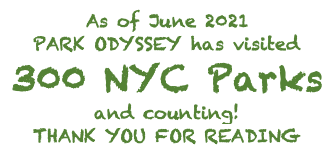
For vanity's sake I'm loathe to compile multiple parks into one post. Writing one discrete post for each park means not only a fairly accurate count of parks visited but also a maximum marker of pride in how many I've covered.
Still, it makes sense to combine Staten Island's Allison Pond Park and Goodhue Park since I couldn't identify the border separating the two. And I've added Jones Woods Park because it's more-or-less contiguous with Goodhue.
I've been to Sailors' Snug Harbor – officially known today as Snug Harbor Cultural Center & Botanical Garden – numerous times, both for leisurely visits and to review productions by the late lamented Harbor Lights Theater Company. I never knew or noticed that a large park lay just across the street to the south. Until this year, that is, when a neighbor clued me in. I looked on a map and lo and behold, there it was. Or rather, there they were.
Allison Pond Park
Entering Allison Pond Park from Prospect Avenue, you immediately face an excellent prospect: the pond itself, graced by a gracious fountain and paddled by the largest turtles I've ever seen in a New York City park.
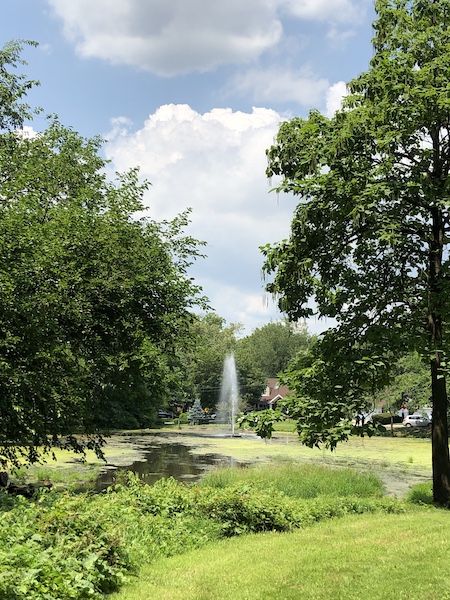
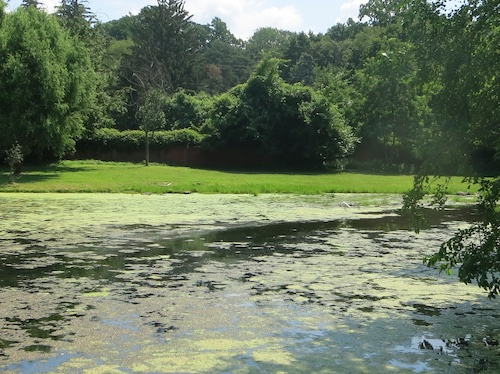
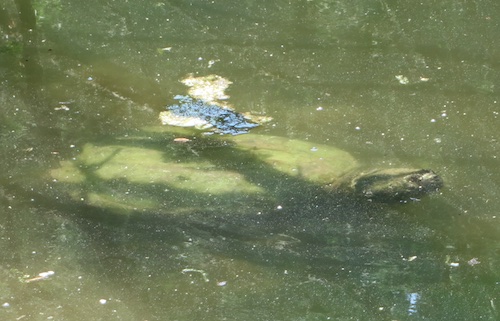
An egret, too, posed conveniently on our recent visit.
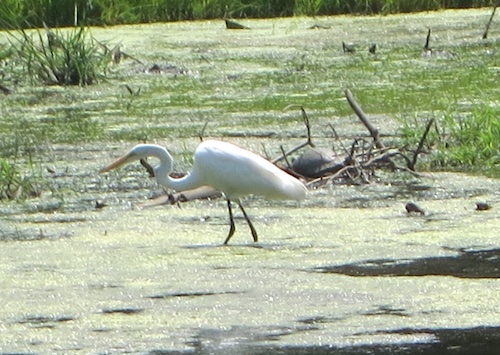
Venturing beyond the pond, one finds the Allison Pond Park Trail well maintained.
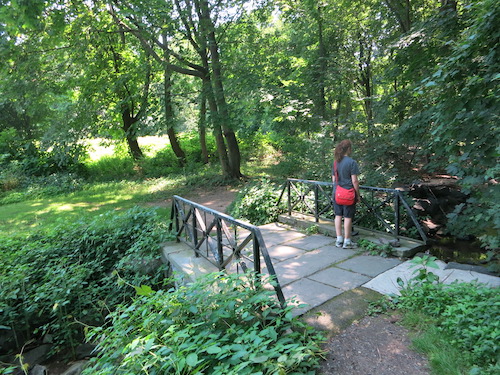
You can easily feel like you're in a remote forest as you gaze at Harbor Brook.
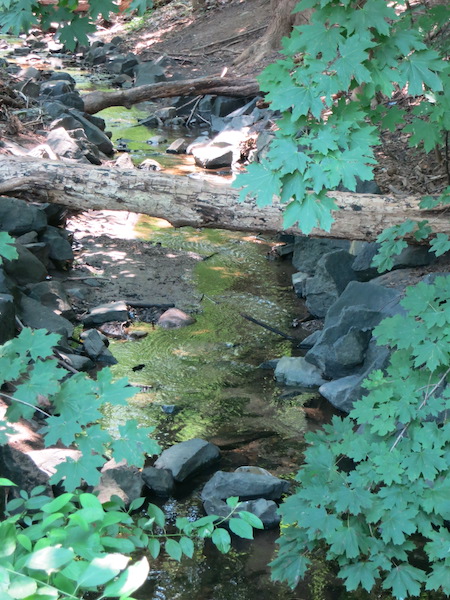
Still there are plenty of signs this is anything but a virgin forest.
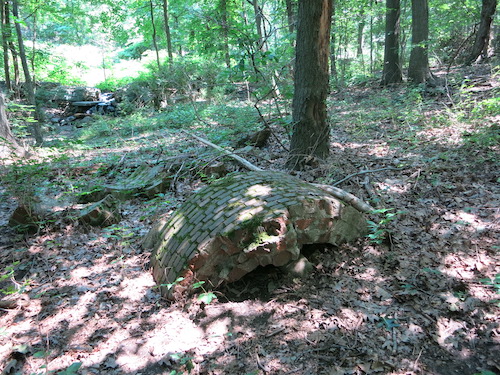
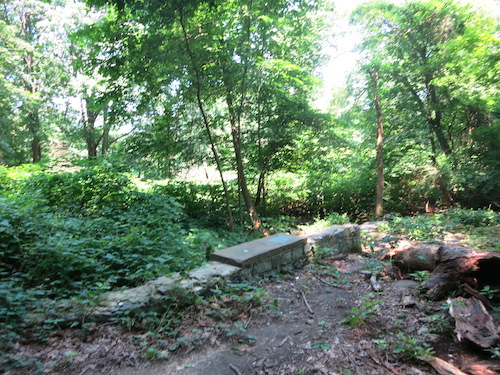
And speaking of virgins, both Allison Pond Park and Goodhue Park were festooned with recently planted saplings protected by plastic tubes.
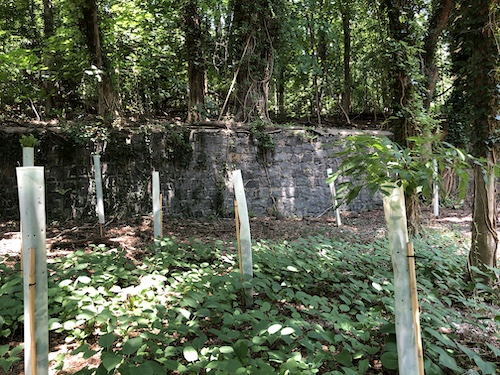
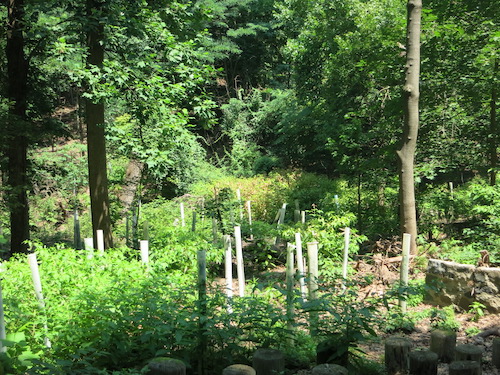
George William Allison (1888-1939) was an engineer who, as Borough Works Commissioner, supervised all of Staten Island's Works Progress Administration (WPA) projects beginning in 1934. According to SI Live, these New Deal programs employed 19,000 Staten Islanders.
The park that bears his name was once part of Sailors' Snug Harbor, at the time a home for retired sailors. Allison Pond itself, according to Forgotten New York, is "small glacial leftover that once provided water" to nearby Snug Harbor. The pond, along with the surrounding area through which the brook flows, officially became New York City parkland in the 1940s. The city renovated Allison Pond Park in 1990.
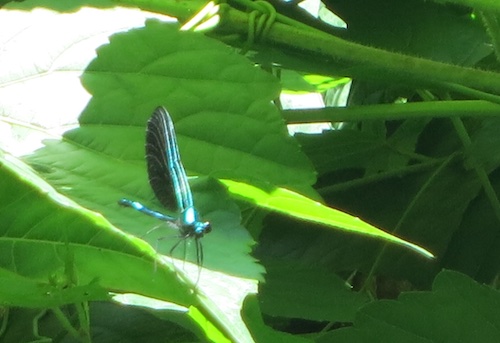
Goodhue Park
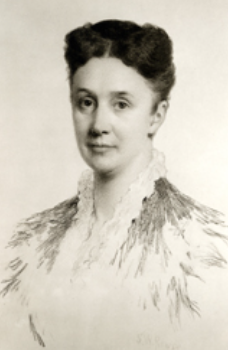 Jonathan Goodhue bought and began developing the property in 1841, building his Woodbrook Mansion. In 1912 his descendant Sarah Parker Goodhue (1828-1917), "a grande dame of Gilded Age New York City" who with her husband collected art treasures in Europe and the U.S., donated the land to the Children's Aid Society, which operated a summer camp and an agricultural camp for girls here. Goodhue Park is still partly managed by the Society, which today oversees athletic fields and an outdoor swimming pool among other facilities.
Jonathan Goodhue bought and began developing the property in 1841, building his Woodbrook Mansion. In 1912 his descendant Sarah Parker Goodhue (1828-1917), "a grande dame of Gilded Age New York City" who with her husband collected art treasures in Europe and the U.S., donated the land to the Children's Aid Society, which operated a summer camp and an agricultural camp for girls here. Goodhue Park is still partly managed by the Society, which today oversees athletic fields and an outdoor swimming pool among other facilities.
The city began acquiring the property in 2009, a few years after the Society announced it needed to sell the land in order to survive here. The purchase came in stages, with funds allocated for a third parcel in 2017 after community action against a sale to private developers. The arrangement seems to have worked out OK, with the Society continuing to manage activities here.
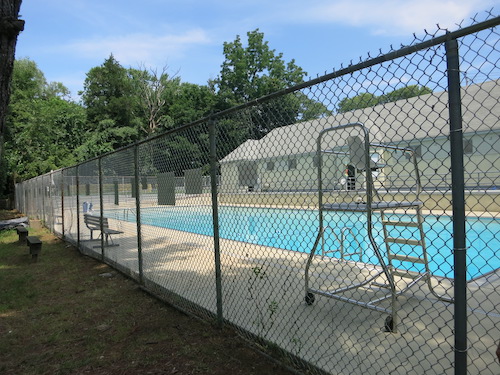
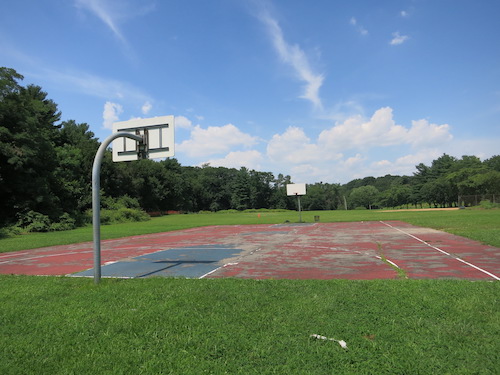
The friendly pool manager told us that some young teenagers had recently been caught vandalizing the saplings. This appetite for destruction is almost inconceivable to me, as it was to him. The kids were punished for it, but – lesson learned? Who knows.
Goodhue Park has more to recommend it than trees, forest trails and turtles. This weird thing, for example:
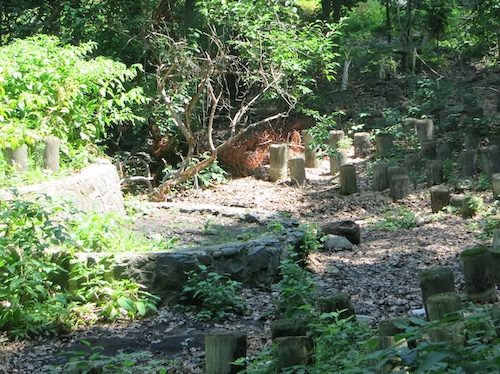
I couldn't figure out what it was. What were all these stump things? Was it some weird pagan ritual site?
Mrs. Odyssey spotted the key structure. It's in the sunlight in the following photo.

It's hard to make out, so I'll just tell you: It's a stage. This is an amphitheater, which like most of the park's manmade features is a holdover from past Children's Aid Society activities. Overgrown, mossy, but right there by the trail. In an SI Live post with many photos, Tom Wrobleski reports counting about 200 seats.
More holdovers hide in the woods atop a steep climb.
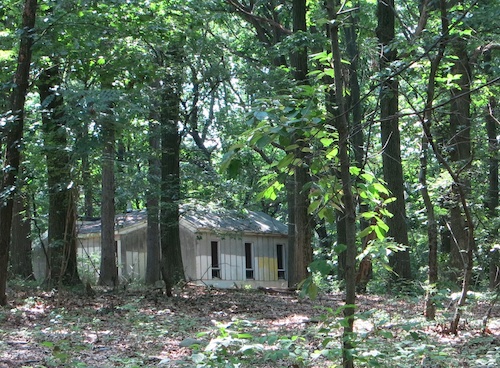
Three abandoned structures also date from the Children's Aid Society's heyday here.
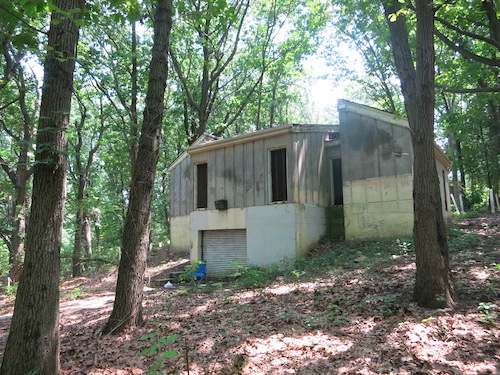
This sort of find is the kind of thing that you don't encounter in any other borough of New York City. Staten Island is a weird, wild world unto itself.
Harbor Brook runs through the ravine below the hills. As another SI Live post explains, it "drains the area from Jones Woods Park and the surrounding hillsides southward. As it exits Goodhue, the brook continues through Allison Pond Park. A culvert from Allison Pond leads to the stream in Snug Harbor and hence to the Kill van Kull." Yes, it's all connected.
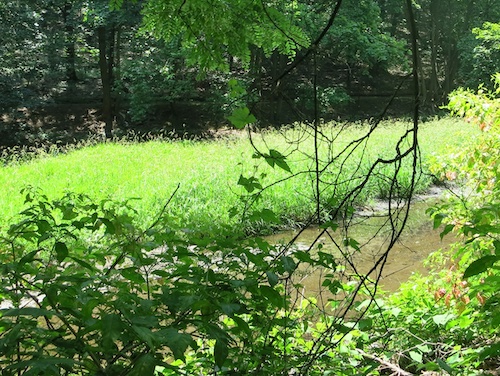
The large reptiles here, again per SI Live, are snapping turtles. They're shy and slide into the water if you come near.

It wouldn't be a Staten Island excursion without an encounter with at least one ungulate. This deer was nosing around a Children's Aid Society building at the edge of Goodhue Park.

Jones Woods Park
A short trail runs into the abovementioned Jones Woods Park, some of which is dense inaccessible forest.

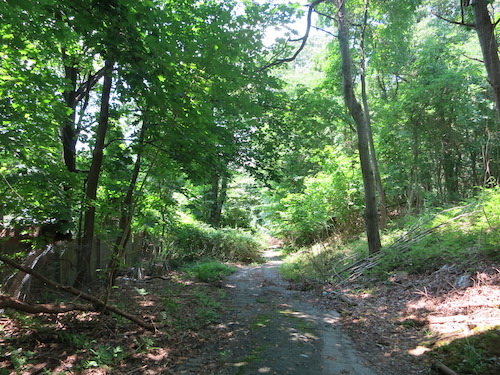
Soon the trail disgorges you onto a semi-hidden street, fenced off from the rest of the park.
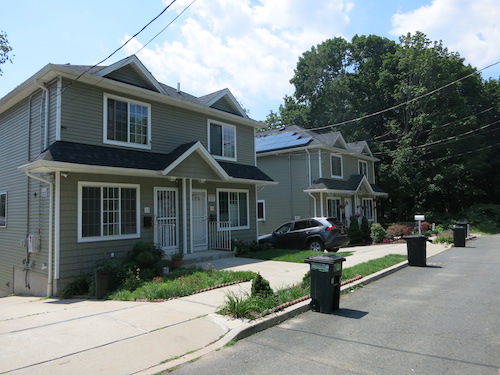
There's one strange old blocky building. Abandoned?
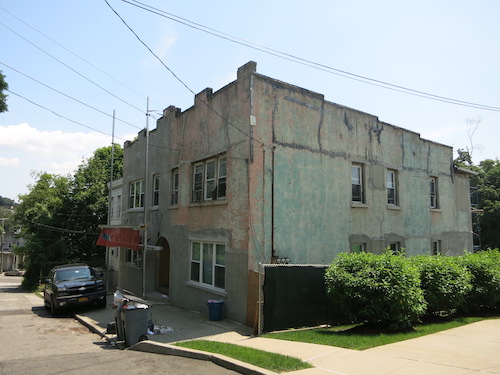
On the other side of the street rises the mysterious part of Jones Woods.
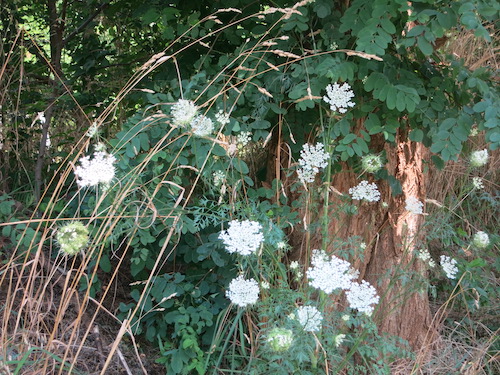
Jones Woods Park came down to us from stockbroker and entrepreneur Shipley Jones, whose estate here was known as The Cedars, according to real estate writer Anthony Licciardello. Jones died in 1936, after which developers began to sniff around.
Like Goodhue Park, Jones Woods was saved from development thanks to a movement to preserve the land that progressed in stages, beginning in 1996. The city paid $17 million for it.
I've seen blog posts (like this one) and photos that suggest there's another entrance to Jones Woods Park from another side. If there's access we didn't reach, we'll get to it next time and I'll update this post.
All photos © Critical Lens Media
No comments:
Post a Comment